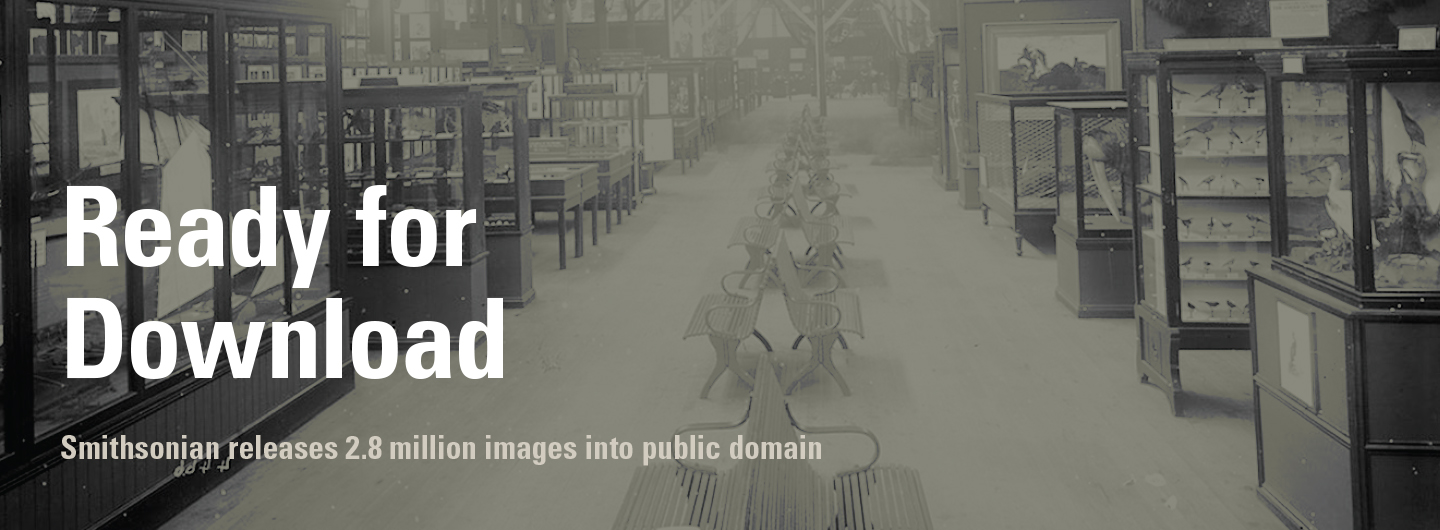
Ready for Download
Images courtesy of The Smithsonian institution
Smithsonian releases 2.8 million images into public domain
Culture connoisseurs, rejoice: The Smithsonian Institution is inviting the world to engage with its vast repository of resources like never before.
For the first time in its 174-year history, the Smithsonian has released 2.8 million high-resolution two- and three-dimensional images from across its collections onto an open access online platform for patrons to peruse and download free of charge. Featuring data and material from all 19 Smithsonian museums, nine research centers, libraries, archives, and the National Zoo, the new digital depot encourages the public to not just view its contents, but use, reuse ,and transform them into just about anything they choose—be it a postcard, a beer koozie, or a pair of bootie shorts.
And this gargantuan data dump is just the beginning. Throughout the rest of 2020, the Smithsonian will be rolling out another 200,000 or so images, with more to come as the Institution continues to digitize its collection of 155 million items and counting.
The database’s launch also marks the latest victory for a growing global effort to migrate museum collections into the public domain. Nearly 200 other institutions worldwide—including Amsterdam’s Rijksmuseum, New York’s Metropolitan Museum of Art and the Art Institute of Chicago—have made similar moves to digitize and liberate their masterworks in recent years. But the scale of the Smithsonian’s release is “unprecedented” in both depth and breadth, says Simon Tanner, an expert in digital cultural heritage at King’s College London.
Spanning the arts and humanities to science and engineering, the release compiles artifacts, specimens and datasets from an array of fields onto a single online platform. Noteworthy additions include portraits of Pocahontas and Ida B. Wells, images of Muhammad Ali’s boxing headgear and Amelia Earhart’s record-shattering Lockheed Vega 5B, along with thousands of 3-D models that range in size from a petite Embreea orchid just a few centimeters in length to the Cassiopeia A supernova remnant, estimated at about 29 light-years across.
Left to right: Golden Poison Frog, Chris Wellner, Smithsonian’s National Zoo; Mount Hollow Back Violin, 1852; Centennial Exposition of the Ohio Valley and Central States (Cincinnati, Ohio), 1888
Until recently, the Smithsonian was among the thousands of museums and cultural centers around the world that still retained the rights to high-quality digital versions of their artworks, releasing them only upon request for personal or educational purposes and forbidding commercialization. The reluctance is often justified. Institutions may be beholden to copyrights, for instance, or worry that ceding control over certain works could lead to their exploitation or forgery, or sully their reputation through sheer overuse.
Still, Kapsalis thinks the benefits of the Smithsonian’s public push, which falls in line with the Institution’s new digital-first strategy, will far outweigh the potential downsides. “Bad actors will still do bad,” she says. “We’re empowering good actors to do good.”
Most of the change, however, will happen far beyond the Smithsonian’s walls. Listed under a Creative Commons Zero (CC0) license, the 2.8 million images in the new database are now liberated from all restrictions, copyright or otherwise, enabling anyone with a decent Internet connection to build on them as raw materials—and ultimately participate in their evolution.
Above all, the open access initiative forges a redefined relationship between the Smithsonian and its audiences around the world, Kapsalis says. That means trust has to go both ways. But at the same time, the launch also represents a modern-day revamp of the Institution’s mission—the “increase and diffusion of knowledge,” now tailored to all that the digital age has to offer. For the first time, visitors to the Smithsonian won’t just be observers, but participants and collaborators in its legacy.
Check out the resources at: www.si.edu/OpenAccess
UCDA Designer magazine: Vol. 45, No. 1 (Spring 2020)